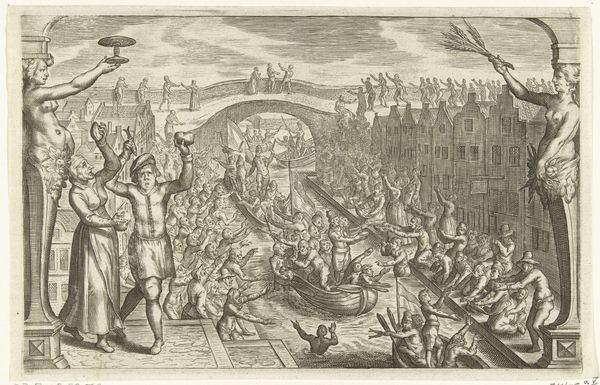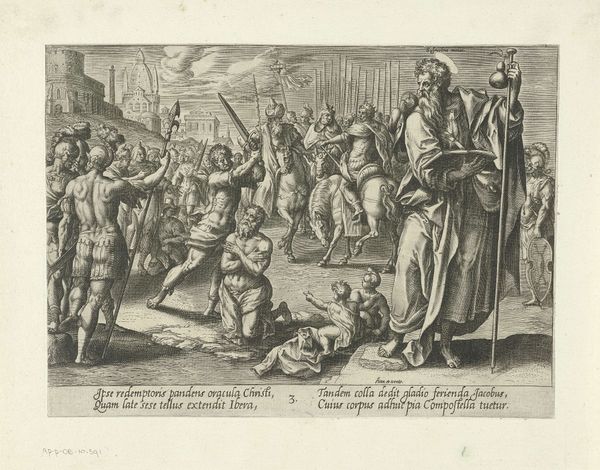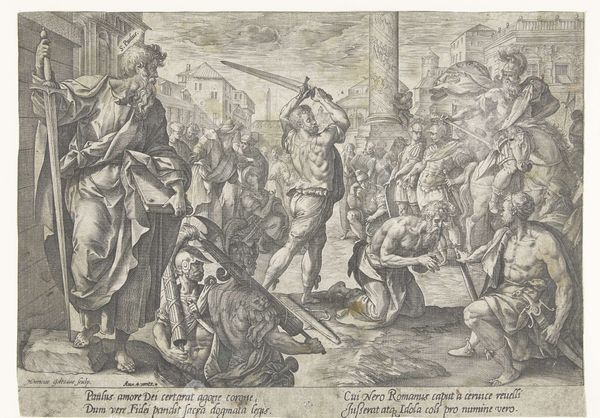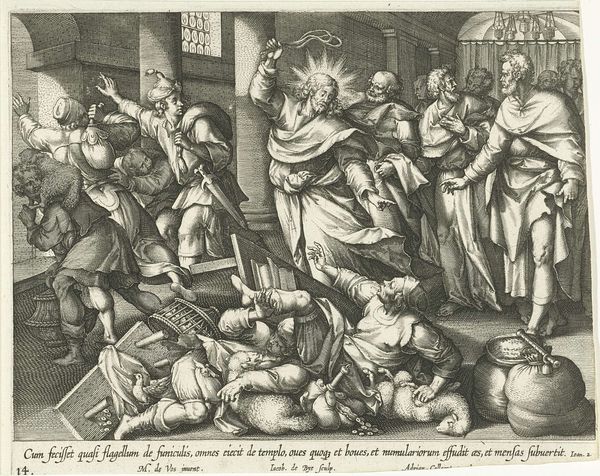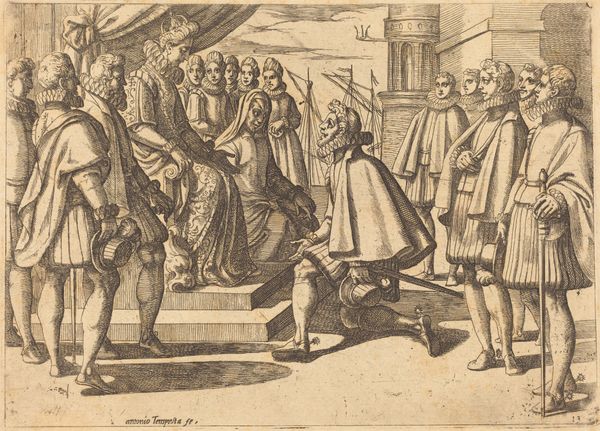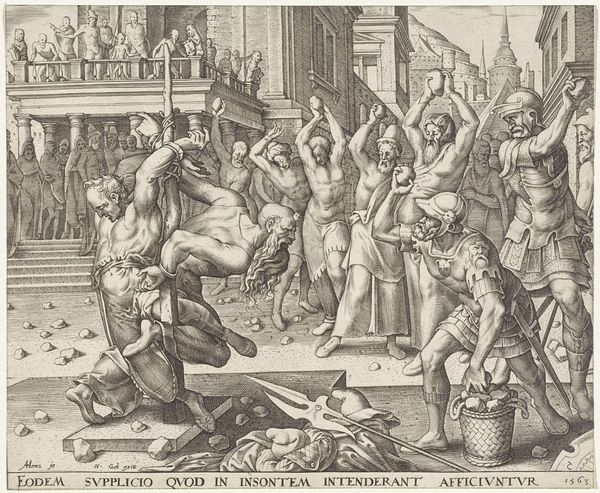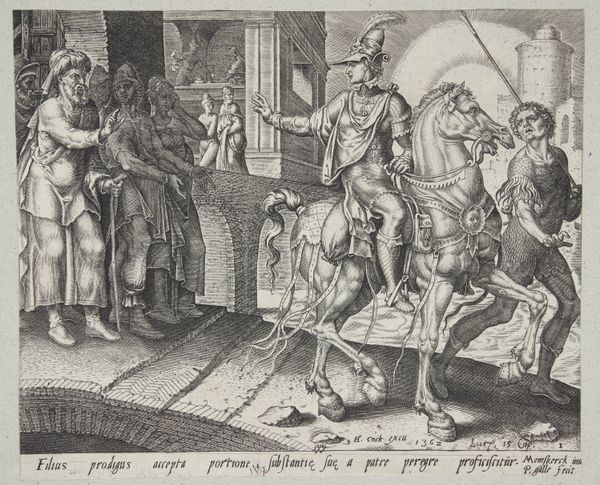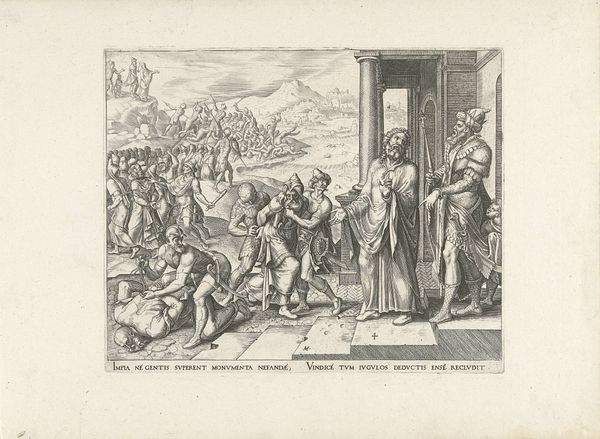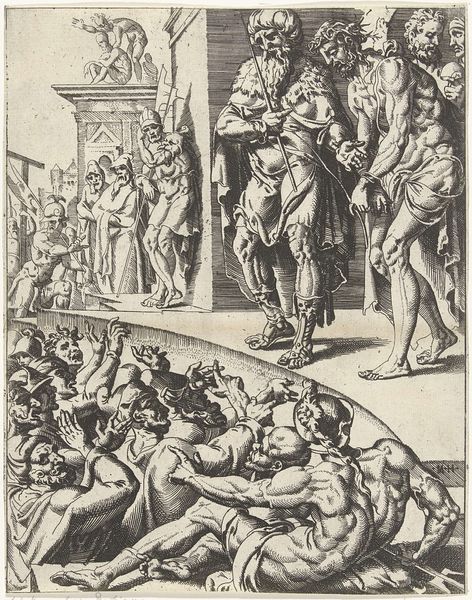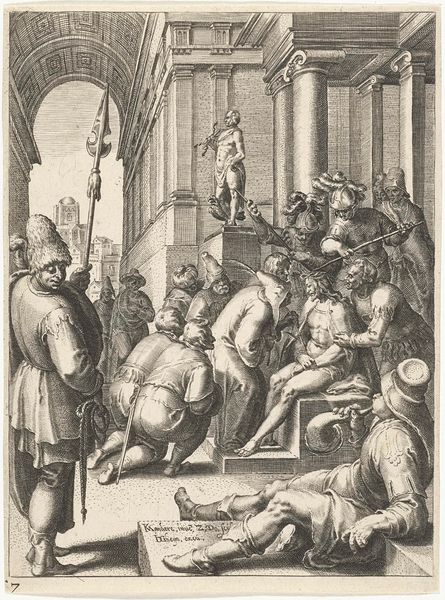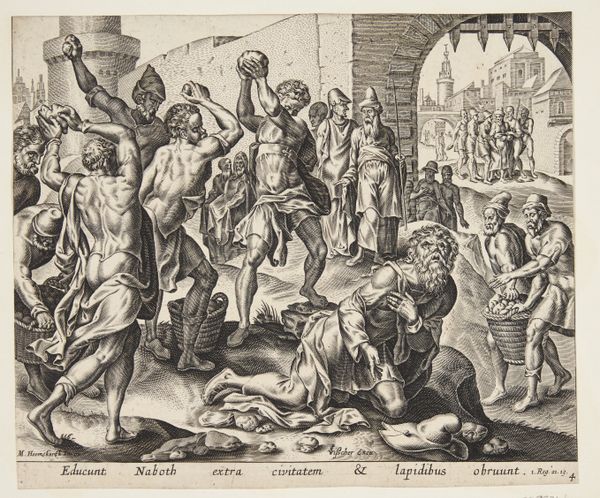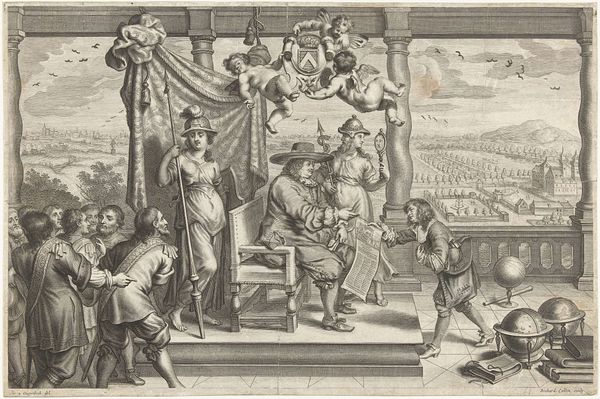
Koning Karel II met steun van de Republiek op de troon van Engeland, 1660 1660
0:00
0:00
engraving
#
portrait
#
baroque
#
pen drawing
#
figuration
#
ink line art
#
line
#
history-painting
#
engraving
Dimensions: height 268 mm, width 349 mm
Copyright: Rijks Museum: Open Domain
Editor: This engraving, made by Jan Gerritsz Swelinck in 1660, is called "Koning Karel II met steun van de Republiek op de troon van Engeland, 1660." That translates to "King Charles II with the support of the Republic on the throne of England, 1660". The composition is quite dense with figures and symbols; it's a lot to take in at once. What can you tell me about what’s happening here? Curator: What immediately captures my eye is the almost theatrical presentation of power. We see Charles II seated on his throne, flanked by figures representing virtues and supported, quite literally, by the Dutch Republic – the lion at his feet. How does this staged image speak to the complexities of restoring a monarchy? Editor: That lion at his feet, representing the Dutch Republic – that's a striking detail, considering England and the Dutch Republic had a complicated relationship. The angel above proclaiming "Vivat Rex!" seems to emphasize this divinely sanctioned power, but also feels like propaganda. Curator: Indeed! The angel with the banner suggests divine approval. The symbolism carries a heavy cultural and political weight, attempting to legitimize Charles II's rule. But consider the artist’s perspective. Is he merely recording history, or is he crafting a particular narrative, one that perhaps downplays the tensions between England and the Republic, highlighting instead a message of unity and divinely ordained right? Editor: So, by visually emphasizing the Dutch support and divine blessing, Swelinck attempts to create this unified narrative, masking underlying political tensions within the artwork itself? Curator: Precisely. The engraving is a carefully constructed statement about power, legitimacy, and the intertwined fates of nations. Editor: I see that now. Looking at it through the lens of symbolic messaging really brings out the underlying narratives and the deliberate choices the artist made. Curator: These symbols work like cultural memory triggers. They evoke shared understandings, shaping perceptions of historical events even centuries later.
Comments
No comments
Be the first to comment and join the conversation on the ultimate creative platform.
